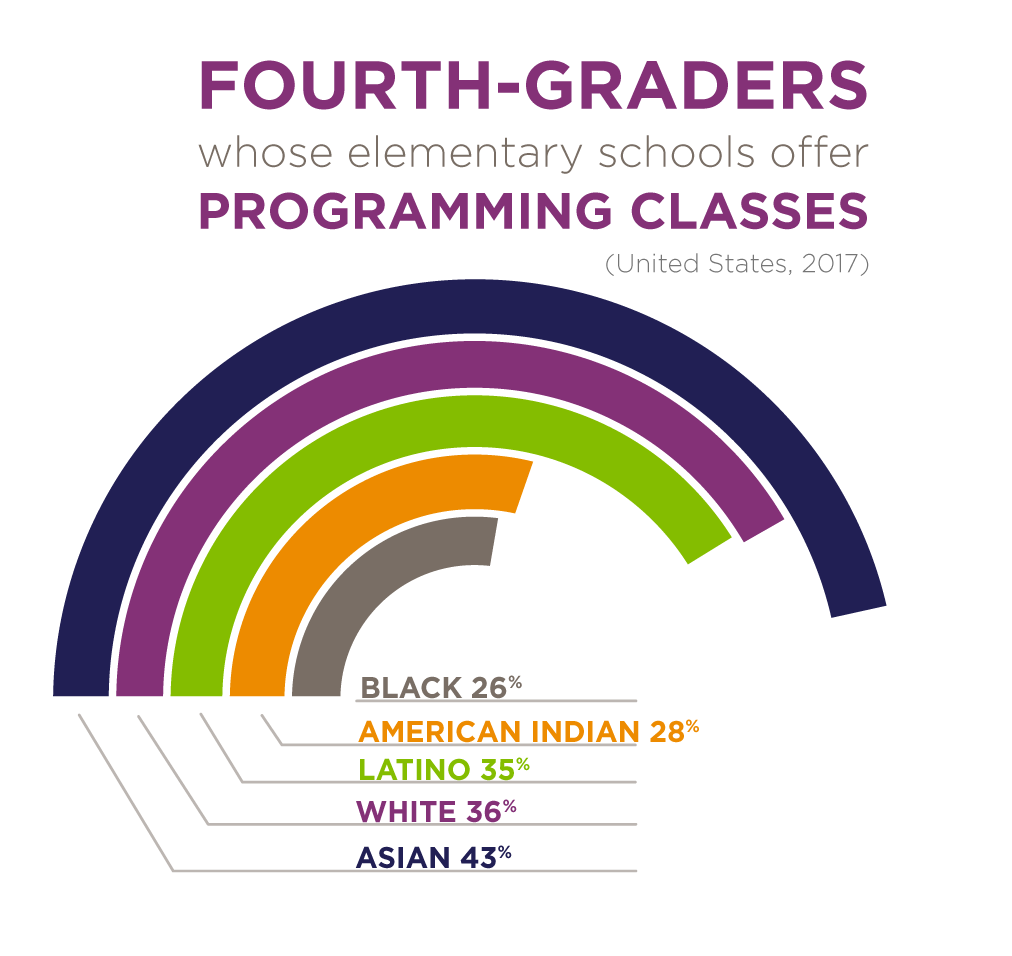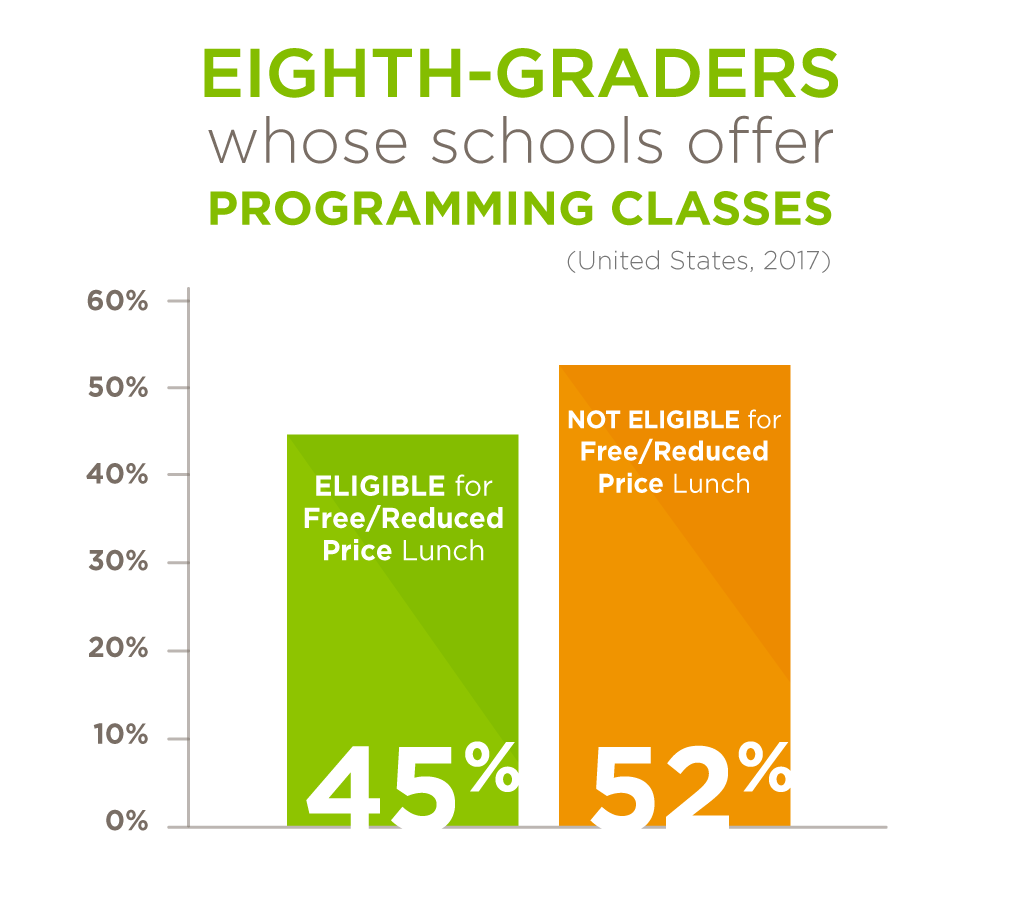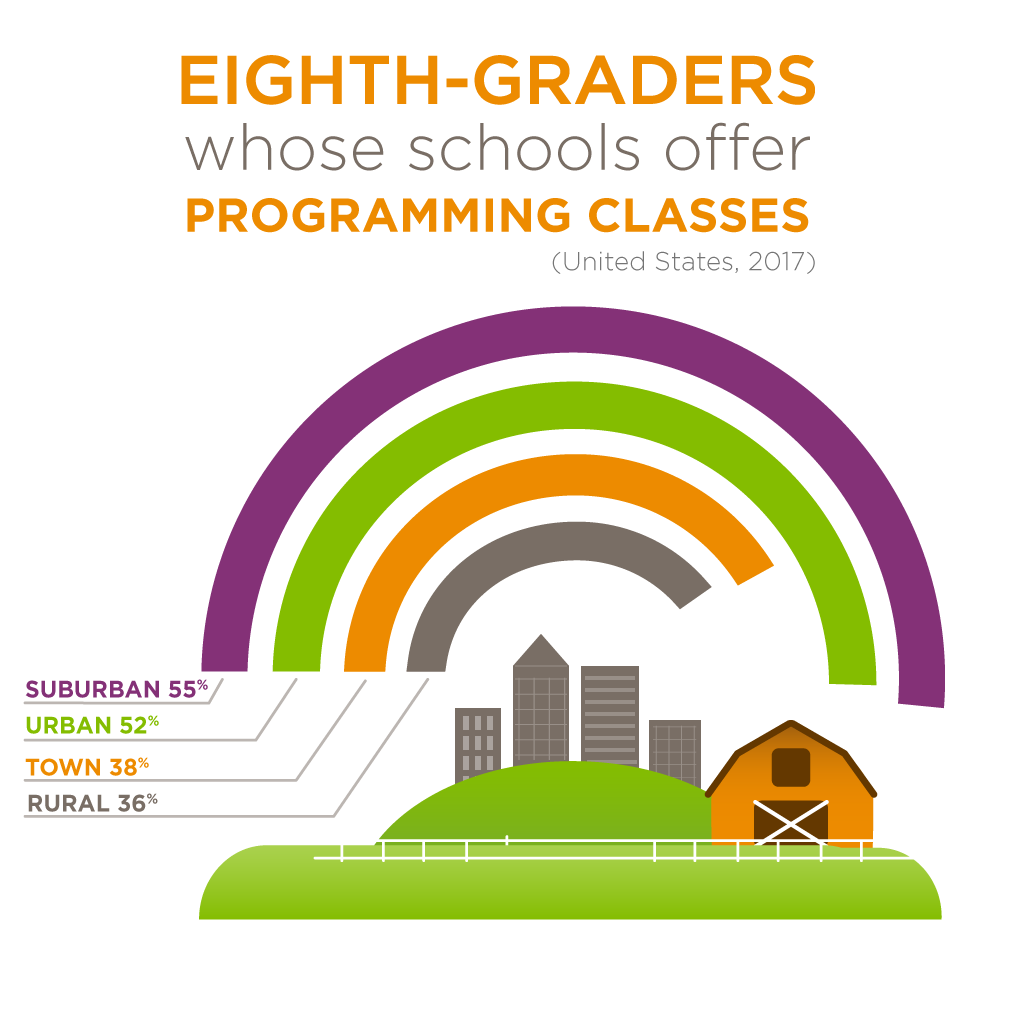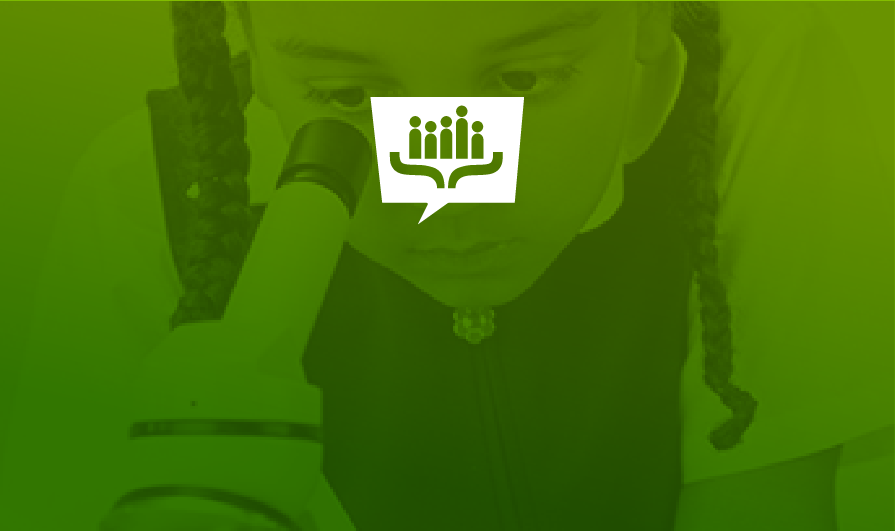Dozens of states have joined the Computer Science for All initiative to tackle limited and inequitable access to computer science classes in U.S. schools. Until now, gaps in high school have received most attention, but new state-by-state Vital Signs data reveal that the gaps start much earlier.
We analyzed data from the 2017 National Assessment of Educational Progress to determine how many fourth- and eighth-grade students have access to instruction in computer science, and here’s what we found:
Overall, less than half of U.S. students at either grade level have access to such classes, and a closer look reveals that minority, low-income and rural students have the fewest opportunities in their schools.
Racial gaps. Black and American Indian fourth-graders are least likely to attend schools that offer programming. In eighth grade, racial inequities persist: Forty-one percent of black students, 37 percent of American Indian students and 48 percent of white students have access to programming classes.

Income gaps. Family income also affects students’ opportunities: Thirty percent of fourth-graders who qualify to receive free or subsidized school lunches attend schools with programming classes. Among those who do not qualify, 40 percent attend such schools. We found a similar pattern in eighth grade:

Rural gaps. Rural elementary and middle school students also receive fewer opportunities: Twenty-seven percent of rural fourth-graders have access to programming classes, compared with 41 percent of suburban students. The eighth-grade data tell a similar story:

An Important Note About Programming Classes
These new Vital Signs data may in fact overstate the opportunities elementary and middle schools offer their students, because it is not entirely clear what school personnel have in mind when they answer “yes” to NAEP’s question about whether they offer programming classes. For example, did schools offer the Hour of Code, a brief introduction to programming? Special computer science modules in math or science courses? Standalone programming classes? Keyboarding classes?
School leaders can have hazy notions about what constitutes programming or computer science. In a 2015 survey, most principals classified “creating documents or presentations on the computer” and “searching the Internet” as computer science activities. (Computer science experts disagree.)
Still, the new Vital Signs data offer the most recent and complete state-by-state information on access to K-8 computer science. They tell a remarkably consistent story of opportunity gaps from one state to the next.
A Brighter Future?
Most states are pursuing strategies to expand access to computer science. Most activity thus far has addressed high school. Fifteen states have mandated universal access to computer science classes, and 38 states plus the District of Columbia now allow computer science to count toward graduation.
Yet some computer science education advocates argue that high school is too late to build an academic foundation in the field. Fortunately, states are turning their attention to elementary and middle schools. For example, Florida has started requiring all middle schools to teach computer science, and Indiana and Iowa have extended that requirement to elementary schools as well. Twenty-one states have adopted academic standards for computer science, many of which will support access to computer science instruction in the early grades.
Will these efforts expand early access to computer science? Keep your eye on the data.
Want to know what’s happening in your state? Check out Vital Signs.










